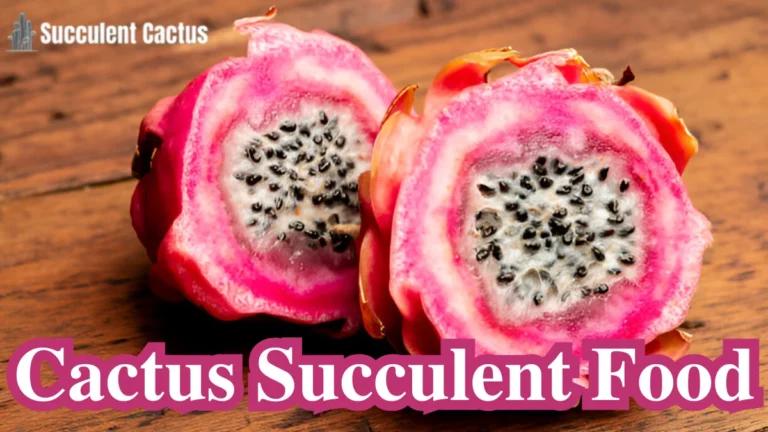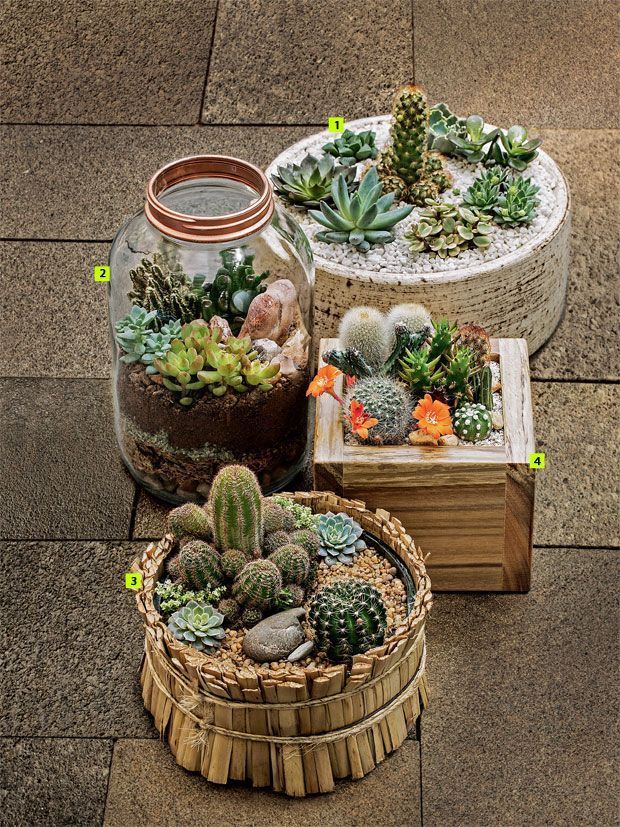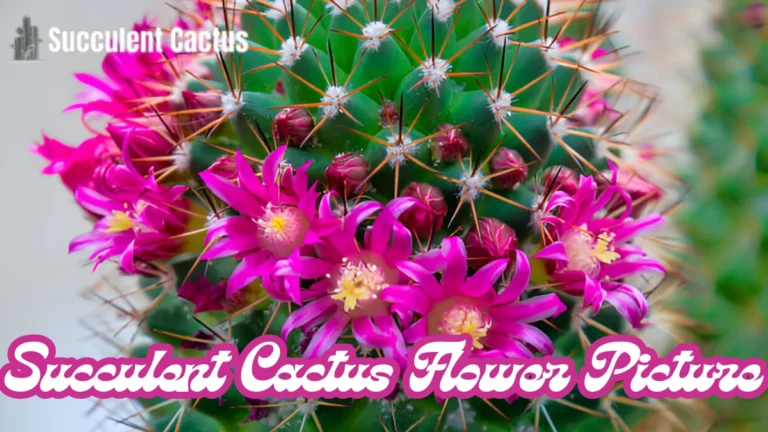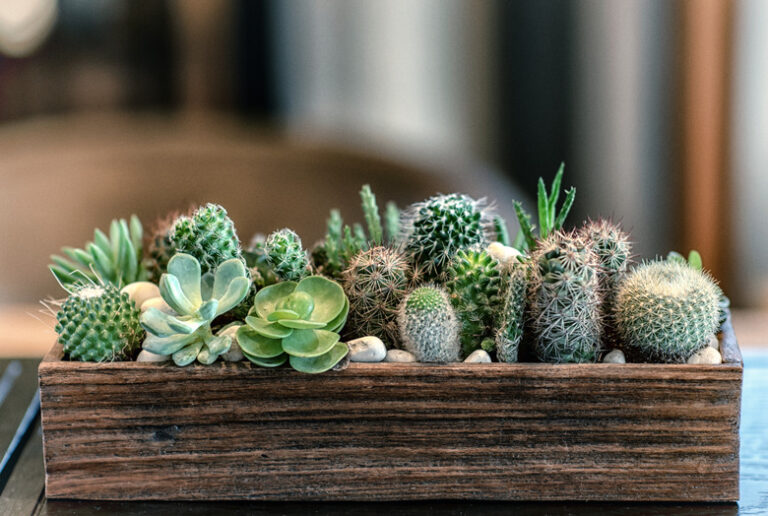Succulent White Cactus Flower: A Complete Guide to Its Beauty and Care

Succulent white cactus flower is among the most captivating bloom in the plant world. Its pristine petals, set against the rugged backdrop of cactus spines and fleshy stems, make it a breathtaking sight. These flowers symbolize purity, resilience, and the delicate balance between harsh environments and natural beauty.
In this comprehensive guide, you’ll discover everything you need to know about these enchanting flowers—from their species and care requirements to their uses, myths, and much more.
Understanding Succulent White Cactus Flower
What Makes Succulent White Cactus Flower Unique?
Succulent White Cactus Flower stands out with its pure elegance, contrasting against the green or bluish cactus body. It symbolizes new beginnings and peace, often blooming unexpectedly, adding to its allure.
- Visual Appeal: Their bright white petals against a tough cactus stem make them a centerpiece in any plant collection.
- Night Blooming Feature: Many white cactus flowers bloom at night, making their fleeting appearance even more magical.
- Symbolism: They often represent purity, endurance, and the beauty that emerges from resilience.
Example: The blooming of the Epiphyllum oxypetalum is celebrated in various cultures, where people gather at night to witness its rare and stunning flowers.
The Science Behind the Bloom
Succulent cacti have evolved to produce these flowers as a survival strategy. Their blooms attract night pollinators like moths and bats. The white hue reflects moonlight, making them visible at night, which is crucial for pollination in desert environments.
- Adaptation Mechanism: Cacti have adapted to arid climates by blooming at night to avoid extreme daytime heat.
- Pollination Strategy: Their fragrant white flowers attract nocturnal creatures, ensuring successful reproduction.
- Survival Advantage: Blooming during cooler hours conserves moisture, vital in desert habitats.
“Nature always finds a way. In the desert, it chooses to bloom under the stars.” – Unknown
Common Species with White Blooms
Several cacti species produce white flowers, including:
| Species | Common Name | Blooming Feature |
| Echinopsis subdenudata | Domino Cactus | Large, fragrant white flowers that open at night. |
| Cereus repandus | Peruvian Apple Cactus | Stunning white nocturnal blooms with edible fruit. |
| Epiphyllum oxypetalum | Queen of the Night | Enormous, fragrant flowers blooming only for one night. |
Each species has its charm and care requirements. Enthusiasts often collect multiple types to enjoy varying bloom times and appearances.
Popular Types of Succulent White Cactus Flowers
Echinopsis Species
The Echinopsis genus is renowned for its large, trumpet-shaped white flowers. These blooms can reach up to 6 inches in diameter and last for about a day. Despite their short lifespan, the blooms are highly anticipated events among plant enthusiasts.
- Growth Habit: Compact, globular shape with spines that contrast beautifully with the delicate flowers.
- Care Needs: Prefers bright, indirect sunlight and well-draining soil.
- Notable Varieties: Echinopsis subdenudata is favored for indoor cultivation.
Case Study: A home gardener in Arizona reported multiple blooms after adjusting the watering schedule and providing afternoon shade.
Cereus and Its Night Blooms
Cereus cacti often bloom at night with large, fragrant white flowers. These flowers attract nocturnal pollinators like bats and moths. Their short-lived beauty has inspired many myths and legends.
- Spectacular Blooms: Some varieties produce flowers over 10 inches in diameter.
- Fast Growth: Compared to other cacti, Cereus species grow quickly, making them ideal for those seeking faster results.
- Fragrance Factor: Their strong, sweet scent draws pollinators and delights humans alike.
Myth: In some cultures, spotting a Cereus bloom at midnight is said to bring good fortune.
Epiphyllum Oxypetalum: The Queen of the Night
The ‘Queen of the Night’ cactus produces massive white flowers that bloom only at night. These blossoms are famous for their intoxicating fragrance and are celebrated in various cultures with midnight blooming parties.
- Epiphytic Nature: Grows naturally on trees in tropical forests, requiring indirect light and moderate humidity.
- Bloom Timing: Flowers open after dusk and wilt by dawn, making the bloom window a once-in-a-year spectacle.
- Cultural Celebrations: Many cultures, including those in India and Japan, celebrate its blooming with community events.
Real-Life Example: In southern Florida, botanical gardens host special events to witness this mesmerizing night bloom.
Ideal Growing Conditions
Light Requirements
Succulent white cactus flowers thrive under bright, indirect sunlight. While they need ample light for blooming, direct harsh sunlight can scorch their stems.
- Optimal Placement: East or south-facing windows for indoor plants.
- Outdoor Growth: Provide morning sun and afternoon shade.
- Warning Sign: Yellowing or browning indicates excessive sun exposure.
Tip: Rotate your cactus every few weeks to promote even growth.
Soil and Potting Mix
Well-draining soil is essential. A mix specifically designed for cacti and succulents often contains:
- Sand: Improves drainage and prevents root rot.
- Perlite: Enhances aeration and moisture control.
- Pumice: Provides stability and promotes healthy roots.
DIY Mix: Combine 2 parts cactus mix, 1 part perlite, and 1 part coarse sand for optimal results.
Temperature and Humidity Preferences
These cacti prefer warm temperatures between 60°F to 85°F. While they can tolerate temperature drops, prolonged exposure to freezing temperatures can damage them.
- Winter Care: Bring indoor plants away from drafty windows and provide warmth.
- Humidity: Most prefer low humidity, except for epiphytic species like Epiphyllum.
- Temperature Stress: Sudden changes may delay blooming or damage stems.
Fact: A sudden cold snap can cause irreparable tissue damage in cacti.
Watering and Fertilization
How Often Should You Water?
Watering your succulent white cactus flower correctly is crucial for its health and blooming potential. Unlike typical houseplants, cacti store water in their fleshy stems, making them drought-tolerant but susceptible to overwatering.
General Watering Guidelines:
- Spring and Summer (Growing Season): Water every 10-14 days or when the top 1-2 inches of soil are completely dry.
- Fall and Winter (Dormant Season): Water sparingly, about once a month, to prevent root rot.
- Indoor Plants: May require less frequent watering due to stable indoor conditions.
- Outdoor Plants: Monitor rainfall and humidity to avoid overwatering.
Tip: Insert a wooden skewer into the soil; if it comes out dry, it’s time to water. Always water deeply, allowing excess water to drain through the pot’s drainage holes.
Best Fertilizers for Blooming
Fertilizing your white cactus flower enhances its growth and encourages vibrant blooms. However, using the right type and quantity of fertilizer is essential.
Ideal Fertilizer Types:
- Balanced Fertilizer (10-10-10 or 20-20-20): Diluted to half strength during the growing season.
- Low-Nitrogen Fertilizer: Promotes blooming without encouraging excessive stem growth.
- Organic Options: Worm castings or compost tea for a gentle nutrient boost.
Application Schedule:
- Growing Season (Spring to Early Fall): Fertilize every 4-6 weeks.
- Dormant Season: Avoid fertilizing to prevent stressing the plant.
Fact: Over-fertilizing can lead to lush foliage but poor blooming. Stick to the recommended frequency for optimal results.
Signs of Overwatering and Underwatering
Proper watering is a delicate balance. Both overwatering and underwatering can harm your succulent white cactus flower.
Signs of Overwatering:
- Yellowing or translucent stems
- Mushy texture and soft spots
- Foul-smelling soil indicating root rot
Signs of Underwatering:
- Wrinkled, shriveled stems
- Slow or stunted growth
- Soil pulling away from the pot edges
Quick Fixes:
- Overwatering: Remove the plant from soggy soil, let the roots dry, and replant in fresh, well-draining soil.
- Underwatering: Water thoroughly, ensuring water reaches the roots, but avoid leaving the plant in standing water.
Pro Tip: Err on the side of underwatering—cacti recover more easily from drought than from rot.
Propagation Methods
Seed Propagation
Growing a succulent white cactus from seeds is rewarding but requires patience.
Steps to Propagate from Seeds:
- Obtain Fresh Seeds: Purchase from reputable sources or collect from mature cactus flowers.
- Prepare Soil: Use a well-draining mix with sand, perlite, and cactus soil.
- Sow Seeds: Scatter seeds on the surface and lightly cover them with a thin soil layer.
- Maintain Moisture: Mist the soil to keep it moist but not soggy.
- Provide Warmth: Place the container in a warm area with indirect sunlight.
Germination Timeline:
- Seeds typically germinate within 2-6 weeks.
- Maintain humidity using a plastic cover, but ensure ventilation to prevent mold.
Tip: Patience is key—seed-grown cacti may take several years to bloom.
Offsets and Pups
Many white-flowering cacti produce offsets, commonly known as pups, which are miniature versions of the parent plant.
Propagation Steps:
- Identify Healthy Offsets: Look for pups at the base of the parent plant.
- Detach Carefully: Use a sterilized knife or twist gently to remove the pup.
- Callous Over: Allow the cut end to dry for 2-3 days to prevent rot.
- Plant the Pup: Place it in a well-draining mix and water lightly after a week.
Advantages:
- Faster growth compared to seed propagation
- Higher success rate for beginners
Fun Fact: Pups often retain the blooming cycle of the parent, potentially flowering sooner.
Grafting Techniques
Grafting involves joining a cactus pup (scion) to a different cactus base (rootstock) to enhance growth and flowering.
Benefits of Grafting:
- Speeds up flowering, especially for slow-growing species
- Strengthens weaker cacti by providing a robust root system
Grafting Process:
- Select Compatible Cacti: Choose a healthy rootstock and a desirable scion.
- Make Clean Cuts: Slice both cacti straight across using a sterilized blade.
- Join Surfaces: Place the scion on the rootstock, aligning vascular rings.
- Secure and Wait: Use rubber bands to hold them together until they fuse (usually 1-2 weeks).
Tip: Graft during the active growing season for best results.
Blooming Cycle and Flower Care
When Do They Bloom?
Succulent white cactus flowers generally bloom during warmer months, though timing varies by species.
Typical Blooming Periods:
- Echinopsis: Late spring to early summer, often in the morning.
- Cereus: Night blooms during summer, lasting until early morning.
- Epiphyllum Oxypetalum: Blooms at night, typically from May to October.
Factors Influencing Blooming:
- Adequate light exposure
- Proper watering and fertilization
- A consistent dormancy period during winter
Fact: Some species bloom only once a year, making each blossom a special event.
Extending Bloom Duration
While many white cactus flowers last just a day, you can encourage frequent blooms and longer-lasting flowers with proper care.
Tips to Maximize Blooms:
- Stress-Free Environment: Avoid moving the plant during budding stages.
- Consistent Watering: Stick to a schedule without sudden changes.
- Adequate Lighting: Morning sun with afternoon shade promotes healthy flowering.
- Fertilization: Use bloom-specific fertilizers during the growing season.
Quick Tip: Prune spent flowers to redirect energy toward new growth.
Post-Bloom Care Tips
After the bloom fades, caring for your cactus ensures future flowers.
Steps to Follow:
- Deadhead Spent Blooms: Use sterilized scissors to remove wilted flowers.
- Resume Normal Care: Continue regular watering and light exposure.
- Fertilize Moderately: Support the plant’s recovery and future bloom potential.
- Monitor for Stress: Address any signs of pest infestations or environmental stress.
Important: Avoid fertilizing immediately after blooming, as the plant focuses on rest.
Common Pests and Diseases
Identifying Common Pests
Succulent white cactus flowers, while hardy, can fall prey to several pests that hinder growth and blooming.
Most Common Pests:
- Mealybugs: White, cottony masses on stems and roots.
- Spider Mites: Tiny, reddish insects creating fine webs.
- Scale Insects: Hard, shell-like bumps attached to stems.
- Aphids: Small, green or black insects clustered around new growth.
Detection Tips:
- Inspect under leaves and around the base regularly.
- Look for distorted growth, yellowing, or sticky residue (honeydew).
Quick Tip: Use a magnifying glass to spot tiny pests like spider mites.
Prevention Strategies
Prevention is more manageable than pest removal. Following these steps helps keep your white cactus flowers healthy:
Preventive Measures:
- Quarantine New Plants: Isolate new cacti for two weeks before placing them with existing ones.
- Clean Tools and Pots: Always sterilize pruning shears and repotting equipment.
- Avoid Overwatering: Damp conditions invite pests and mold.
- Improve Air Circulation: Keep indoor cacti in well-ventilated areas.
- Natural Predators: Introduce ladybugs to combat aphids naturally.
Fact: Healthy, well-cared-for cacti are less susceptible to pest infestations.
Treatment Options
If pests appear, act swiftly to prevent spreading. Here’s how:
Effective Treatments:
- Mealybugs: Dab with rubbing alcohol using a cotton swab.
- Spider Mites: Spray with a water hose or use neem oil.
- Scale Insects: Gently scrape off with a toothbrush and apply insecticidal soap.
- Aphids: Wash off with soapy water or introduce beneficial insects.
Organic Solutions:
- Neem oil and insecticidal soap offer safe, chemical-free options.
- Use diatomaceous earth around the soil to deter crawling pests.
Pro Tip: Treat in the early morning or late afternoon to avoid sunburn on treated areas.
Decorating with White Cactus Flowers
Indoor Decor Ideas
Succulent white cactus flowers bring elegance and simplicity to indoor spaces.
Creative Ideas:
- Minimalist Pots: Use sleek, white ceramic pots for a modern touch.
- Hanging Baskets: Showcase trailing species like the Epiphyllum in macramé hangers.
- Terrariums: Combine small white-flowering cacti with pebbles and driftwood.
- Table Centerpieces: Group various species in a shallow bowl for dining table decor.
Tip: Place them near windows for both visual appeal and adequate sunlight.
Outdoor Landscaping Tips
White cactus flowers can transform outdoor areas into serene, drought-tolerant landscapes.
Landscaping Ideas:
- Rock Gardens: Pair cacti with decorative stones and gravel for contrast.
- Border Plantings: Line pathways with white-blooming cacti for a natural guide.
- Container Gardens: Group different heights and textures on patios or balconies.
- Vertical Gardens: Attach small pots to a garden wall for a striking display.
Pro Tip: Use contrasting foliage and colored stones to make white blooms pop.
Arranging for Special Occasions
White cactus flowers, with their fleeting beauty, can be the centerpiece of memorable events.
Event Decor Uses:
- Weddings: Use potted cacti as eco-friendly centerpieces or guest favors.
- Dinner Parties: Small arrangements can brighten dining settings.
- Gifts: A blooming white cactus makes for a unique, living present.
Quick Tip: Use non-toxic varieties when placing arrangements within reach of children or pets.
Case Studies and Success Stories
Home Garden Transformations
Homeowners worldwide have embraced the beauty of white cactus flowers to revitalize their gardens.
Case Study: Sarah’s Courtyard Makeover:
Sarah, from Arizona, converted her barren courtyard into a thriving rock garden with Echinopsis cacti. Within one season, her space boasted stunning morning blooms, drawing admiration from neighbors.
Commercial Landscaping Projects
Businesses have leveraged the aesthetic and low-maintenance qualities of these plants.
Example: Green Office Initiative:
A tech firm in California installed Cereus peruvianus along its entrance. The night blooms became an office attraction, fostering employee engagement and wellness.
Personal Growing Experiences
Hobbyists often share stories of cultivating these plants with impressive results.
Success Story: James’s Indoor Garden:
James, a Chicago apartment dweller, managed to get his Epiphyllum oxypetalum to bloom indoors using a grow light setup. His Instagram post went viral, inspiring urban gardeners.
Fun Facts and Myths
Fascinating Facts About White Cactus Flowers
- Some species bloom for only one night, closing by sunrise.
- Pollinators like moths and bats are attracted to night-blooming varieties.
- Despite their delicate appearance, these flowers thrive in harsh environments.
Common Myths Debunked
- Myth: White cactus flowers are rare.
Truth: Many species produce white blooms regularly with proper care. - Myth: You must water cacti weekly.
Truth: Overwatering causes more harm than neglect. - Myth: Indoor cacti don’t bloom.
Truth: With enough light and care, indoor plants can flourish.
Cultural Significance
In various cultures, white cactus flowers symbolize purity, endurance, and fleeting beauty.
- Japan: Admired for its ephemeral nature, similar to cherry blossoms.
- Mexico: Certain species are celebrated during local festivals.
Frequently Asked Questions (FAQs)
- How long do white cactus flowers last?
Most last between a few hours to two days, depending on the species. - Why isn’t my cactus blooming?
Possible reasons include insufficient light, lack of dormancy, or nutrient deficiencies. - Can I grow white cactus flowers indoors?
Yes, provided they receive enough light, either natural or from grow lights. - Are white cactus flowers fragrant?
Some varieties, like the Epiphyllum oxypetalum, emit a sweet scent at night. - What’s the easiest white-flowering cactus for beginners?
The Echinopsis species is beginner-friendly and produces abundant blooms.
Conclusion
Succulent white cactus flower offers a remarkable blend of resilience and delicate beauty. Whether you’re cultivating them indoors, enhancing an outdoor garden, or simply admiring their fleeting blooms, these plants add a unique charm to any space. By understanding their growth needs—like proper watering, ideal light conditions, and timely fertilization—you’ll increase your chances of witnessing these spectacular flowers. And when they bloom, it’s truly a sight to behold—an ephemeral display that reminds us of nature’s wonders.
✅ Ready to transform your garden with stunning white cactus flowers? Start planting today and witness the magic unfold!






